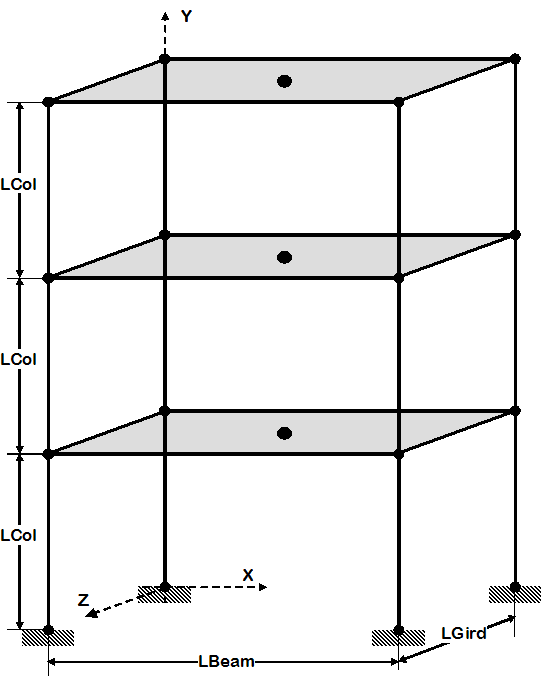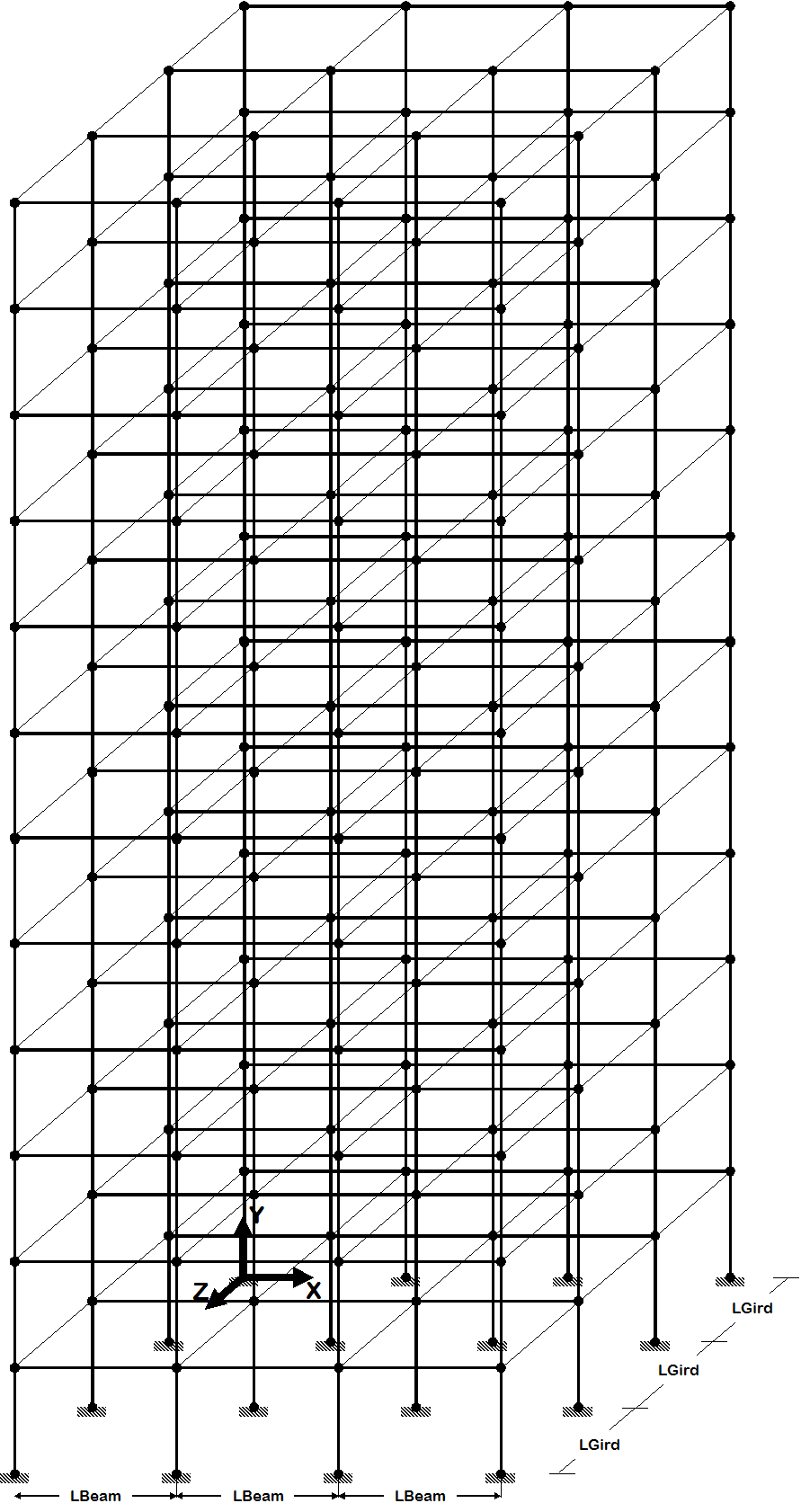|
|
|
|
|
|
|
|
Objectives and Characteristics
|
Model Types
|
Analysis Types
|
Example 7. 3D Frame, 3-story, 3-bayX, 3-bayZ, Reinforced-Concrete Section & Steel W-Section
|

|
- 3D frame of fixed geometry
- nodes and elements are manually manually, one by one
- introduce rigid floor diaphragm
- use previously-defined procedures to view model node numbers and elements, deformed shape, and displacement history, in 3D
|
- Reinforced-Concrete Section
- Steel W-Section
- Elastic or Fiber Section option is a variable within one input file
- rigid diaphragm
|
- static pushover analysis
- static reversed cyclic analysis
- dynamic sine-wave input analysis (uniform excitation)
- dynamic earthquake-input analysis (uniform excitation)
- dynamic sine-wave input analysis (multiple-support excitation)
- dynamic earthquake-input analysis (multiple-support excitation)
- dynamic bidirectional earthquake-input analysis (uniform excitation)
|
Example 8. generic 3D Frame, NStory NBayX, NBayZ, Reinforced-Concrete Section & Steel W-Section
|

|
- 3D frame geometry of variable geometry ( # stories and # bays in X and Z are variables)
- node and element definition is automated
- introduce user-input interface, the user is given the option as to what to view in model
|
- Reinforced-Concrete Section
- Steel W-Section
- Elastic or Fiber Section option is a variable within one input file optional rigid diaphragm
- rigid diaphragm
|
- static pushover analysis
- static reversed cyclic analysis
- dynamic sine-wave input analysis (uniform excitation)
- dynamic earthquake-input analysis (uniform excitation)
- dynamic sine-wave input analysis (multiple-support excitation)
- dynamic earthquake-input analysis (multiple-support excitation)
- dynamic bidirectional eaarthquake-input analysis (uniform excitation)
|